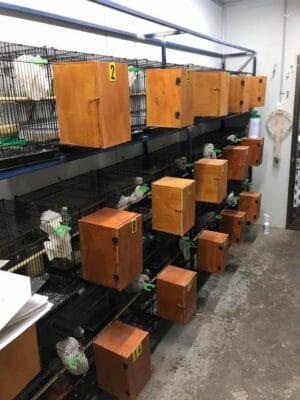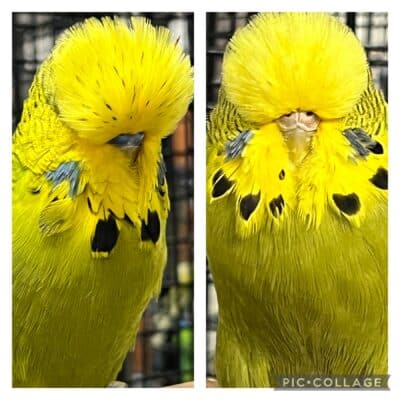
 Breeding Budgerigars/Budgies – A Comprehensive Guide
Breeding Budgerigars/Budgies – A Comprehensive Guide
Breeding budgerigars is an exciting and rewarding activity that requires careful planning and preparation. Whether you’re a seasoned breeder or just starting, there are several things you should keep in mind to ensure the health and well-being of your birds and their chicks. In this blog, we’ll discuss some key factors to consider when breeding budgies. These include problems, care, genetics, nutrition, breeding cabinets, breeding conditions, pairing, eggs, feather plucking, record-keeping, and ringing chicks. With careful consideration, the right birds, and these key factors understood, your birds could make it to the countries’ ultimate show, the ANBC National Titles.
Problems to Look Out For When Breeding Budgies
Breeding budgerigars can be challenging, and there are several potential problems you should watch out for. These include infertility, egg binding, egg damage, feather plucking, and aggression towards chicks. Additionally, budgerigars are prone to certain health issues, such as respiratory infections and mites, which can affect breeding success. Therefore, it’s essential to keep your birds healthy and provide them with proper care and nutrition.
Care and Nutrition for Breeding Budgies
Proper care and nutrition are critical for breeding budgerigars. Make sure to provide your birds with a clean and spacious cage or aviary, with adequate lighting and ventilation. Budgerigars also require a balanced diet that includes fresh fruits, vegetables, and high-quality seeds. It’s also essential to provide your birds with clean water, which should be changed daily.
Genetics
Understanding genetics is key when breeding budgerigars. You should be familiar with basic genetics principles, such as dominant, sex linked and recessive genes, to predict the characteristics of the offspring. Additionally, it’s important to avoid breeding birds that are too closely related, as this can increase the risk of genetic disorders.
Breeding Cabinets
Breeding cabinets are specialized enclosures designed for breeding birds. These cabinets typically include separate compartments for breeding pairs, with nesting boxes and perches. They also help provide a controlled and safe environment for breeding budgerigars.
Breeding Conditions
Breeding conditions are critical for successful budgerigar breeding. These birds require a stable and consistent environment, with appropriate temperatures, humidity levels, and lighting. Additionally, you should provide your birds with a nesting box or container, where they can lay their eggs and raise their chicks.
Pairing
Pairing budgerigars is a crucial step in the breeding process. You should choose pairs that are healthy, genetically diverse, and compatible. Additionally, it’s important to observe the birds’ behavior and make sure they get along before pairing them.
Eggs
Budgerigar eggs normally hatch after 18 days of incubation. During this time, you should provide the birds with ample food and water, and avoid disturbing the nesting box. After hatching, the chicks will require regular feeding and care, including monitoring their health.
Feather Plucking
Feather plucking is a common problem among budgies, which can affect breeding success. This behavior is more often that not caused by stress or boredom. It can be reduced by giving your birds some stimulation in their cage.
Record-Keeping
Record-keeping is key to breeding good budgies. You should keep records of each breeding pair, including their genetic makeup, pairing history, and breeding results. This information can help you make informed decisions when making breeding pairs and predicting what chicks might look like.
Ringing Chicks
Ringing chicks involves placing a small, coded band around their leg, which identifies them and helps track their breeding history. This practice is key to record-keeping and can also prevent accidental breeding between closely related birds. It is also used to identify owner bred and rung birds in exhibitions.
Conclusion
In conclusion, breeding budgerigars requires careful planning and preparation. By understanding the key points made above, you can help ensure the health and well-being of your birds and their chicks.
